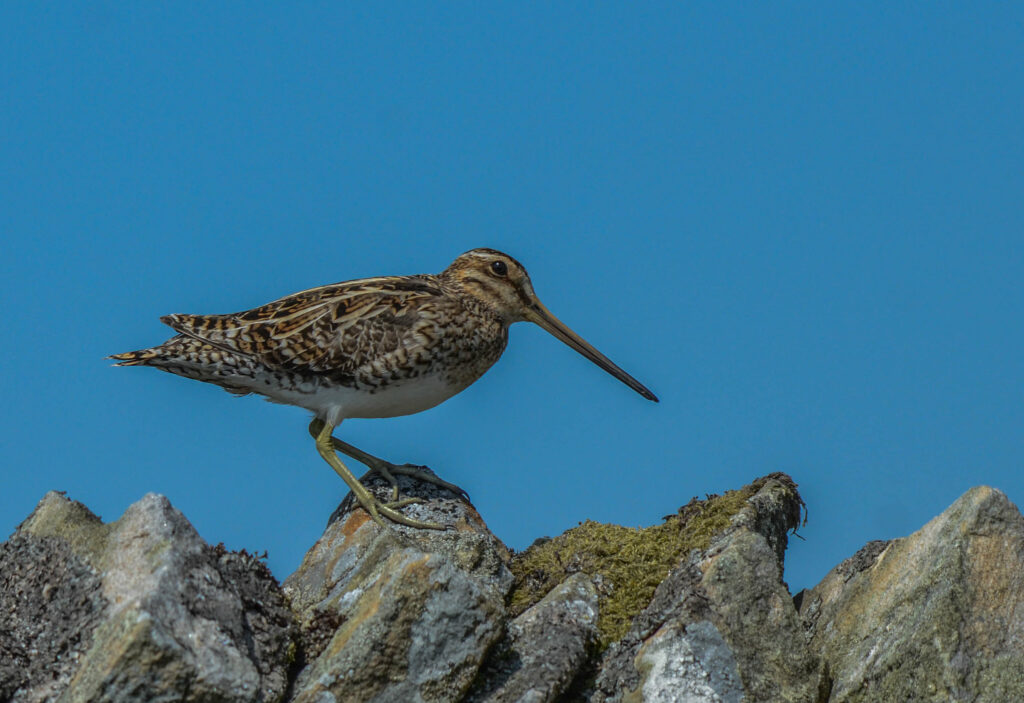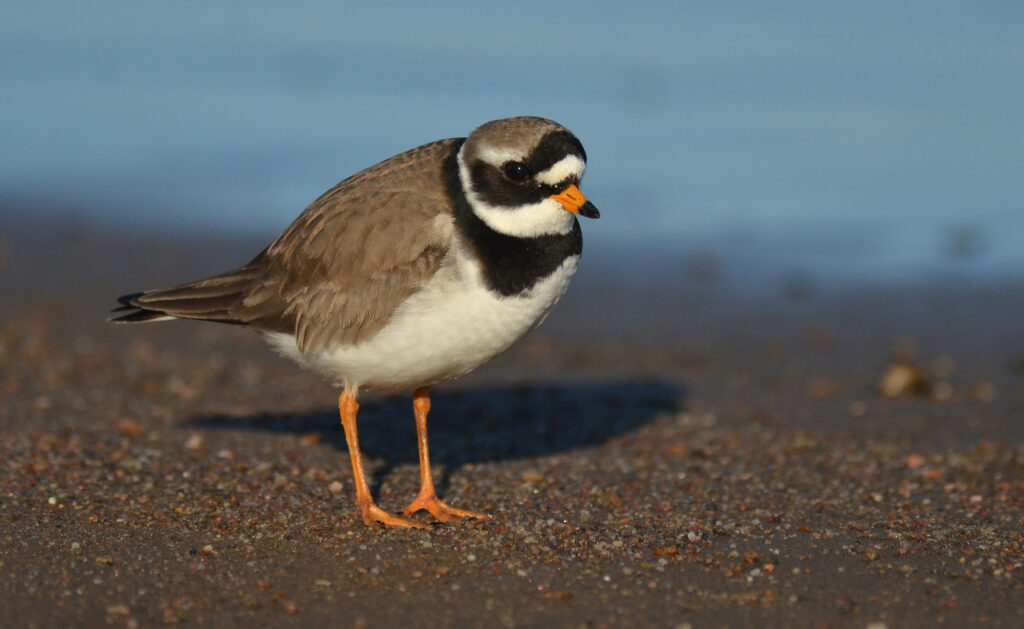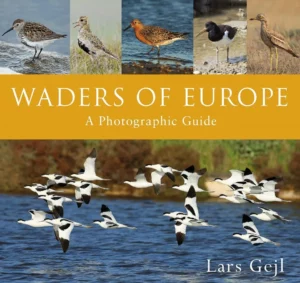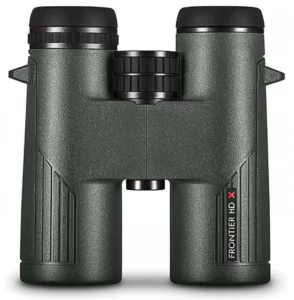Waders, also known as shorebirds, are a part of the order Charadriiformes and are most commonly found along the shoreline and in coastal habitats such as mudflats, saltmarshes and estuaries. These species feed by wading in shallow water for small invertebrates. Thus, many species in this order have long legs and a long bill.
Almost all wader species are ground-nesting birds. They build their nests either on the shoreline or inland habitats with short vegetation such as farmland and heathland. This makes them vulnerable to disturbance, from walkers and dogs, and to many predators. While most of the species in this article are listed as Least Concern by the IUCN red list (except the curlew, which is near threatened), many wader species are considered critically endangered. All the species mentioned below are placed on either the Red or Amber Birds of Conservation Consern 4 list. In the UK, the main threats are climate change and human development, reducing suitable nesting habitats. As farmers are pressured to increase their yield, less of their land is left available for nesting birds. Additional threats include pollution, changes in river management, changes to habitats such as afforestation or wetland drainage and dredging. Therefore, these threats, along with a high number of predators, are causing many wader populations to decline.
Luckily, many can still be seen while birdwatching along UK coastlines. A pair of binoculars or a scope are useful for spotting identifying features without disturbing the birds. A notebook or birdwatching journal can help you keep track of everything you’ve seen. It would also be best to bring a field guide to other wader species not mentioned in this article, a selection of which have been listed below.
Curlew (Numenius arquata)
Distribution: Here all year round, curlews can be seen along the whole of UK’s coastline, with the largest populations in areas such as the Solway Firth, the Wash, and the Severn, Humber and Thames estuaries.
Size: Length: 48–57cm, Wingspan: 89–106cm
BoCC4 status: Red
What to look for: Curlews are the largest wader in Europe, a mottled brown bird that visits the coasts around the UK in winter, but can be found inland in heath and moor and upland habitats. Nationally, their numbers are in steep decline. They have a distinctive long delicate downward curved bill and an evocative and somewhat haunting call.

Redshank (Tringa tetanus)
Distribution: Occuring in wetland areas such as estuaries, saltmarshes and flood meadows, they’re widespread across the UK, although the breeding population is greatest in Scotland and northern England.
Size: L: 24–27cm, WS: 47–53cm
BoCC4 Status: Amber
What to look for: Redshanks are small mottled brown waders with bright orange-red legs and an orange-red bill tipped with black. In-flight, they have darkly tipped wings with a bright white stripe on the trailing edge. They can often be seen foraging along the tideline on the coast and at estuaries and marshes.

Oystercatcher (Haematopus ostralegus)
Distribution: Widespread along UK’s coastline, they’re also found in most major estuaries and occasionally inland flooded gravel pits and large rivers.
Size: L: 39–44cm, WS: 72–83cm
BoCC4 status: Amber
What to look for: Oystercatchers are a common and unmistakable wader around the UK coastline. They have bold black and white markings, a long bright orange-red bill and long pinkish-red legs. They are very vocal birds and their distinctive piping call can often be heard as they tour rock pools and the tide line.

Lapwing (Vanellus vanellus)
Distribution: Found in habitats such as farmland and estuaries, they occur throughout the UK but particularly in lowland areas of northern England and eastern Scotland.
Size: L: 28–31cm, WS: 82–87cm
BoCC4 status: Red
What to look for: From afar and in flight, Lapwings appear black and white with long rounded wings and a wavering flight pattern. Up close they are a beautiful petrol green colour on top and white below. They have a long crest on their head, large dark eyes (underlined with a black line) and red legs.
Did you know? They are also known as peewit, an old name honouring their plaintive and distinctive call.

(Pied) Avocet (Recurvirostra avosetta)
Distribution: This more restricted species can been seen along the east coast in coastal lagoons during the summer, and around sheltered estuaries of south-west England and south Wales during the winter.
Size: L: 42–46cm, WS: 67–77cm
BoCC4 status: Amber
What to look for: These very graceful white and black waders are unmistakable, with long, slim grey legs and a distinctive upturned bill that they use to filter food from the tideline in a characteristic side-to-side sweep of their head.
Did you know? Successful recolonisation of this species in 1947, after its extinction within the UK, led to their adoption by the Royal Society for the Protection of Birds (RSPB) as their logo.

Snipe (Gallinago gallinago)
Distribution: Widespread, this species is found on moorland and well-vegetated wetlands across the UK.
Size: L: 23–28cm, WS: 39–45cm
BoCC4 status: Amber
What to look for: Snipe have short legs and a long, straight bill, with mottled brown feathers on their back and head. Recognisable features are the buff stripes along their back and alternate pale and dark stripes across their head. Their underparts are pale, with a heavily marked chest. When tucked, their wings fall short of the tail and point upwards slightly.

Common Sandpiper (Actitis hypoleucos)
Distribution: In summer, this wader species can mainly be found along rivers, lakes and reservoirs in Scotland, northern England, Wales and Northern Ireland. In winter, they aremore likely to occur along the south coast, and in spring and autumn, they can be found throughout other parts of the UK, near freshwater habitats and some estuaries.
Size: L: 19–21cm, WS: 32–35cm
BoCC4 status: Amber
What to look for: Common sandpipers may initially seem similar visually to snipe, but there are several key differences. This species has the same contrasting brown upperparts and paler, white underparts, but it is a more striking difference in this species. The common sandpiper has a smaller bill and, most importantly, lacks the stripe patternation of the snipe. They can also be identified through their habitual bobbing motion, called ‘teetering’, and the distinct three-note call they give before they fly off.

Ringed Plover (Charadrius hiaticula)
Distribution: Found around much of the UK coast in suitable habitats, such as shingle beaches, they’re also occasionally found on reservoirs and inland flooded gravel pits.
Size: L: 18–20cm, WS: 48–57cm
BoCC4 status: Red
What to look for: This charming species has a brownish-grey back and head, with pale underparts. Their distinctive features are the black and white rings around their neck and the patternation on their face. This bird also has orange legs and a striking orange bill with a black tip. They can be mistaken for a similar species, the little ringed plover (Charadrius dubious). However, that species lacks the orange bill and has bright yellow eyes. The little ringed plover, as the name suggests, is also a smaller species.

Suggested reading and equipment:
 Europe’s Birds: An Identification Guide
Europe’s Birds: An Identification Guide
#251968
 Waders of Europe: A Photographic Guide
Waders of Europe: A Photographic Guide
#235436
 Shorebirds in Action: An Introduction to Waders and their Behaviour
Shorebirds in Action: An Introduction to Waders and their Behaviour
#234898
 Waders of Europe, Asia and North America
Waders of Europe, Asia and North America
#152435
 Hawke Optics Frontier HD X: 8 x 42
Hawke Optics Frontier HD X: 8 x 42
#245622







